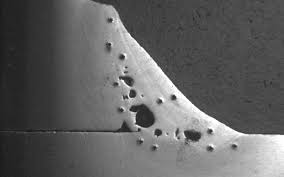What is Porosity in Welding: Comprehending Its Causes and Enhancing Your Abilities
What is Porosity in Welding: Comprehending Its Causes and Enhancing Your Abilities
Blog Article
Recognizing Porosity in Welding: Discovering Reasons, Effects, and Prevention Methods
As specialists in the welding sector are well aware, understanding the reasons, effects, and avoidance methods related to porosity is critical for attaining durable and reputable welds. By delving right into the origin triggers of porosity, examining its damaging impacts on weld top quality, and discovering efficient prevention approaches, welders can enhance their expertise and abilities to produce premium welds constantly.
Common Sources Of Porosity
Contamination, in the form of dirt, oil, or corrosion on the welding surface, produces gas pockets when heated, leading to porosity in the weld. Inappropriate protecting occurs when the protecting gas, generally made use of in procedures like MIG and TIG welding, is unable to totally protect the molten weld pool from reacting with the bordering air, resulting in gas entrapment and succeeding porosity. Additionally, insufficient gas coverage, usually due to wrong flow rates or nozzle positioning, can leave parts of the weld unprotected, permitting porosity to develop.
Results on Weld Quality
The presence of porosity in a weld can significantly jeopardize the overall quality and honesty of the bonded joint. Porosity within a weld produces spaces or tooth cavities that deteriorate the structure, making it much more at risk to cracking, rust, and mechanical failing.
Additionally, porosity can prevent the efficiency of non-destructive screening (NDT) strategies, making it challenging to discover various other defects or discontinuities within the weld. This can bring about substantial safety worries, particularly in vital applications where the architectural honesty of the welded parts is paramount.

Prevention Techniques Summary
Given the destructive influence of porosity on weld quality, reliable avoidance methods are important to maintaining the structural integrity of welded joints. One of the main prevention techniques is comprehensive cleansing of the base products prior to welding. Contaminants such as oil, oil, rust, and moisture can add to porosity, so making certain a tidy work surface area is important. Appropriate storage of welding consumables in dry problems is likewise critical to stop wetness absorption, which can bring about gas entrapment throughout welding. In addition, picking the appropriate welding criteria, such as voltage, present, and travel rate, can aid reduce the threat of porosity development. Ensuring ample shielding gas circulation and coverage is an additional critical avoidance technique, as insufficient gas insurance coverage can lead to climatic contamination and porosity. Lastly, correct welder training and accreditation are necessary for applying safety nets successfully and consistently. By including these avoidance techniques into welding methods, the event of porosity can be considerably lowered, leading to stronger and more trustworthy welded joints.
Importance of Correct Protecting
Proper shielding in welding plays a crucial role in stopping climatic contamination and making sure the stability of welded joints. Shielding gases, such as argon, helium, or a mixture of both, are generally made use of to shield the weld pool content from reacting with components airborne like oxygen and nitrogen. When these reactive aspects enter call with the warm weld pool, they can create porosity, causing weak welds with minimized mechanical residential properties.

Poor protecting can result in various problems like porosity, spatter, and oxidation, jeopardizing the architectural stability of the bonded joint. Sticking to appropriate shielding techniques is important to create high-quality welds with minimal defects and make sure the durability and dependability of the welded parts.
Monitoring and Control Methods
How can welders properly check and manage the welding procedure to make sure optimum results and stop defects like porosity? One secret approach is with the usage of innovative surveillance modern technologies. These can include real-time surveillance systems that provide feedback on criteria such as voltage, present, travel speed, and gas flow prices. By continually checking these variables, welders can determine variances from the excellent conditions and make instant modifications to avoid porosity development.

Additionally, executing proper training programs for welders is learn this here now vital for monitoring and managing the welding process efficiently. What is Porosity. Enlightening welders on the importance of maintaining constant specifications, such as appropriate gas securing and travel speed, can assist protect against porosity concerns. Routine evaluations and accreditations can additionally ensure that welders excel in tracking and regulating welding processes
Additionally, the usage of automated welding systems can boost tracking and control capabilities. These systems can precisely regulate welding parameters, minimizing the chance of human error and making certain constant weld high quality. By integrating advanced monitoring modern technologies, training programs, and automated systems, welders can successfully keep an eye on and manage the welding procedure to lessen porosity defects and attain high-quality welds.
Final Thought

Report this page